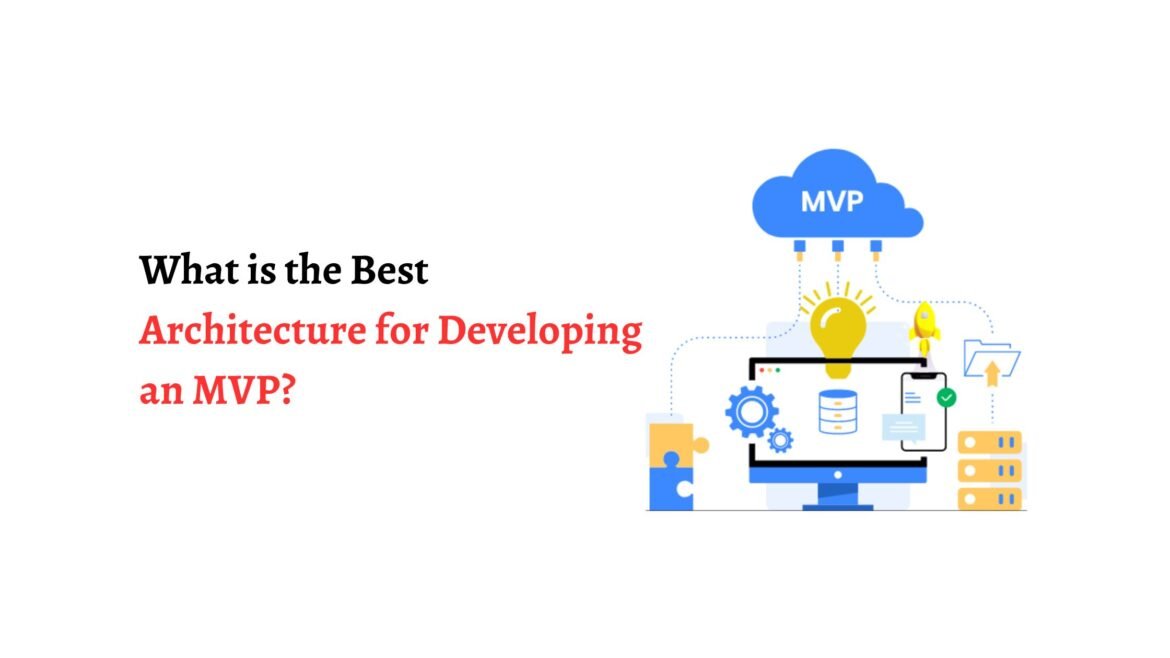When a new product is being developed, many risks are involved. The first step for your business should be to develop an application or product since the entire concept revolves around it. As a result, businesses use the MVP strategy to introduce their business concept to the public. Developing a Minimum Viable Product (MVP) demands a meticulous approach to selecting the architectural framework. MVP development services are a big help when choosing the best architecture for developing an MVP. This pivotal decision profoundly influences the product’s scalability, adaptability, and potential for future enhancements. This exploration delves into four primary architectural paradigms and their respective advantages and drawbacks concerning MVP development.
Types of Architecture
Monolithic Architecture
Monolithic architecture embodies a unified structure where all application components are tightly interconnected within a single codebase.
Pros:
Simplified Development: Initial development in a monolith is streamlined due to its consolidated nature, facilitating faster coding and deployment.
Ease of Debugging: Debugging within a monolith is relatively straightforward as all components are within the same environment.
Cons:
Scaling Challenges: As the system grows, scaling a monolith becomes intricate and may require modifying the entire system, potentially impeding agility.
Fault Tolerance: The interdependence of components in a monolith could lead to a single point of failure, impacting the system’s overall stability.
Microservices Architecture
Microservices architecture decomposes the application into more minor, autonomous, loosely coupled services, each serving a specific function.
Pros:
Scalability and Flexibility: The independent nature of microservices allows for easier scaling and modification of individual services without impacting the entire system.
Enhanced Fault Isolation: Failure in one service does not disrupt the entire system, promoting resilience and fault tolerance.
Cons:
Increased Complexity: Managing a network of services demands robust coordination and communication mechanisms, potentially increasing complexity during development.
Operational Overhead: Maintaining multiple services necessitates efficient orchestration and monitoring, increasing operational complexity.
Service-Oriented Architecture (SOA)
Service-oriented architecture (SOA) shares similarities with microservices but often encompasses larger, more integrated services focusing on reusability.
Pros:
Service Reusability: SOA promotes the reuse of services across multiple applications, fostering efficiency and reducing redundant development efforts.
Integration and Flexibility: Services in SOA offer flexibility and integration capabilities, enabling the creation of comprehensive systems.
Cons:
Coupling and Complexity: The interdependence between services can introduce tight coupling, potentially affecting scalability and agility.
Maintenance Challenges: Over time, managing the interconnected services might lead to complexities in maintenance and modifications.
Serverless Architecture
Serverless architecture abstracts infrastructure management, allowing developers to focus solely on writing and deploying code without worrying about server provisioning.
Pros:
Scalability and Cost Efficiency: Serverless computing automatically scales based on demand, reducing operational costs by charging only for actual usage.
Simplified Development: Developers can solely concentrate on code, accelerating development and deployment cycles.
Cons:
Vendor Lock-In: Embracing serverless might tie the application to a specific cloud provider, limiting flexibility and portability.
Monitoring and Debugging Challenges: Serverless architectures pose challenges in monitoring and debugging due to the lack of direct server access.
Conclusion
Selecting the ideal architecture for MVP hinges on understanding the project’s unique requirements and long-term objectives. Each architecture presents a trade-off between various benefits and challenges. Making an informed decision requires a thorough evaluation aligned with scalability needs, development speed, and future expansion aspirations. The right choice can pave the way for a robust, adaptable, and scalable MVP, setting the stage for a successful product journey. You can collaborate with an experienced MVP development company to develop scalable MVPs. Finding an MVP architecture that works is a complex undertaking. As a result, thorough research is required, considering a number of variables including budget, product features, business size, and others. Create an MVP architecture and test the hypotheses to see if it meets the needs of your users. Make the right MVP development choice to watch your business concept take off.
Also read Technology


